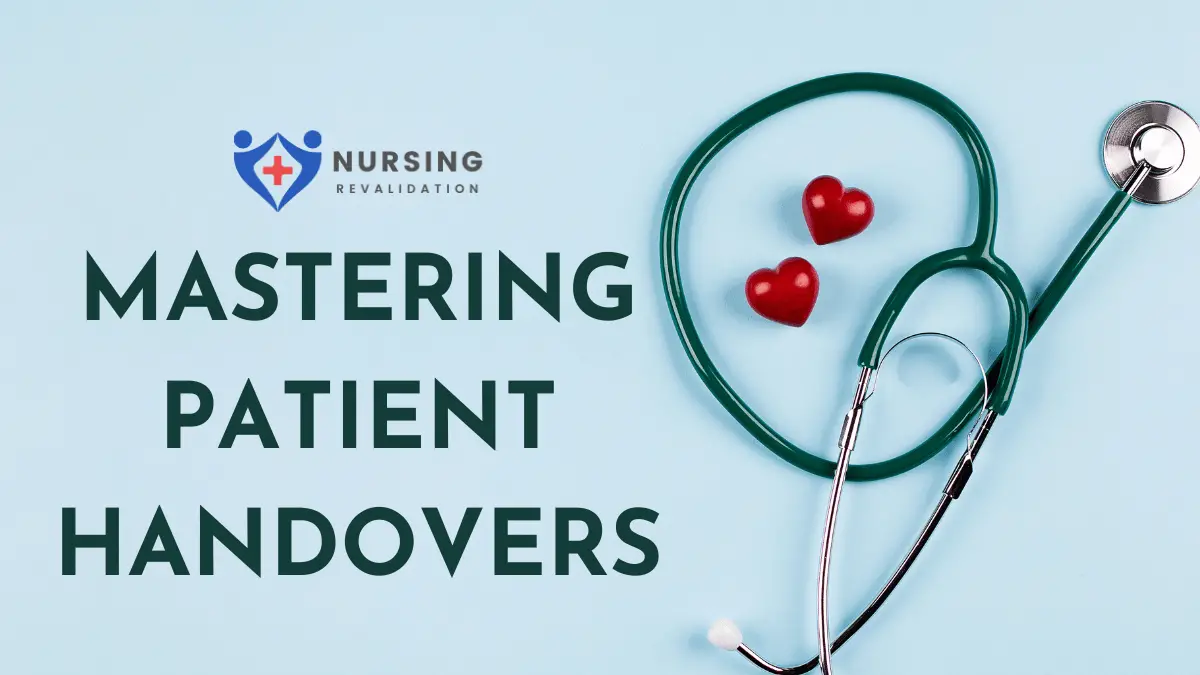In the dynamic environment of healthcare, effective patient handovers are paramount for ensuring seamless continuity of care. As nursing professionals, mastering the art of patient handovers not only enhances patient safety but also streamlines communication among healthcare teams. In this comprehensive guide, we delve into essential tips for mastering patient handovers in nursing, equipping you with the knowledge and skills necessary to excel in this critical aspect of patient care.
Understanding the Importance of Patient Handovers:
Patient handovers serve as pivotal moments in healthcare settings, where pertinent information about a patient’s condition, treatment plan, and ongoing care is transferred from one healthcare provider to another. The significance of effective handovers cannot be overstated, as errors or omissions during this process can lead to adverse outcomes for patients. Hence, it is essential for nursing professionals to approach handovers with diligence and precision.
Table: Sample Handover Checklist
| Patient Information | Critical Findings | Medication Reconciliation | Follow-Up Actions |
|---|---|---|---|
| Name/Age | Vital Signs | Current Medications | Pending Tests |
| Diagnosis/Prognosis | Allergies | Changes in Medications | Pending Consults |
| Treatment Plan | Recent Interventions | Administration Schedule | Nursing Assessments |
| Code Status | Lab Results | Discharge Instructions | Physician Orders |
Key Components of Effective Patient Handovers:
1. Standardized Communication Protocols:
Implementing standardized communication protocols ensures consistency and clarity during handovers. Utilizing tools such as SBAR (Situation, Background, Assessment, Recommendation) facilitates structured communication, enabling nursing professionals to convey relevant information succinctly and accurately.
2. Active Listening and Engagement:
Active listening is paramount during patient handovers, as it promotes understanding and helps identify critical information. Nursing professionals should engage actively, asking clarifying questions and seeking additional details when necessary to ensure comprehensive comprehension of the patient’s status and needs.
3. Utilization of Electronic Health Records (EHR):
Leveraging electronic health records streamlines the handover process by providing real-time access to patient information. Nursing professionals should familiarize themselves with EHR systems and utilize them effectively to retrieve and document essential patient data during handovers.
4. Collaboration and Team Communication:
Effective patient handovers require seamless collaboration and communication among healthcare team members. Nursing professionals should actively engage with other disciplines, such as physicians, pharmacists, and allied health professionals, to exchange pertinent information and coordinate care effectively.
Best Practices for Patient Handovers:
1. Conduct Thorough Patient Assessments:
Prior to initiating a handover, nursing professionals should conduct thorough patient assessments to gather comprehensive information about the patient’s condition, treatment plan, and any pertinent updates since the last handover.
2. Prioritize Patient Safety:
Patient safety should always be the primary focus during handovers. Nursing professionals should prioritize the accurate transmission of critical information, such as allergies, medication reconciliations, and recent changes in the patient’s condition, to mitigate potential risks and ensure safe care transitions.
3. Document Handover Details:
Documenting handover details is essential for accountability and continuity of care. Nursing professionals should maintain accurate and detailed documentation of handover discussions, including relevant patient information, assessments, interventions, and follow-up actions.
4. Perform Read-Backs and Clarifications:
To enhance communication effectiveness, nursing professionals should engage in read-backs and clarifications during handovers. This practice ensures mutual understanding between the sender and receiver of information, reducing the likelihood of misunderstandings or errors.
Conclusion:
Mastering patient handovers is an indispensable skill for nursing professionals, fostering continuity of care and patient safety. By adhering to standardized communication protocols, actively engaging in handover processes, and prioritizing patient safety, nurses can effectively navigate the complexities of patient handovers and contribute to optimal patient outcomes. Embracing best practices and leveraging technology facilitates seamless communication and collaboration among healthcare teams, ultimately enhancing the quality of care delivered to patients. With dedication and ongoing education, nursing professionals can excel in patient handovers, making invaluable contributions to the healthcare ecosystem.


